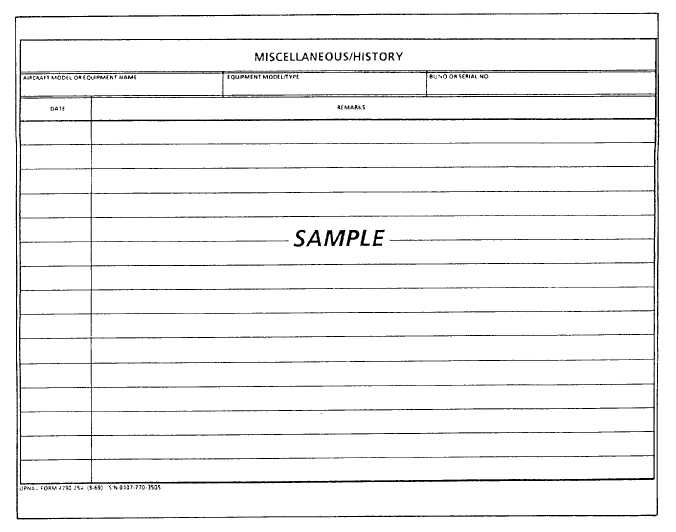Miscellaneous/History (OPNAV 4790/25A)
This section of the logbook (fig. 6-7) is used by operating activities to record significant information affecting the aircraft for which no other space is provided in the logbook. Such information may include abnormal flight characteristics, peculiar troubles of an undetermined nature, damage to the aircraft, major component changes not logged elsewhere, compass calibration entries, historical data, a change in the authorized calendar or phased inspection interval, a change to the calendar or phased induction date, and authorizations for service period extension. When aircraft are exposed to large quantities of salt water, fire-extinguishing agents, or other corrosive material, an entry is made on this form. This entry includes a description of the decontamination accomplished and the time between exposure and completion of decontamination. When dye is used to locate a leak in a fuel tank, a notation is made on this form. Hydraulic contamination entries are made whenever testing reveals Navy standard class 5 contamination is exceeded and whenever aircraft are transferred to and from SDLM or from one reporting custodian to another. In the latter case, an entry is made to indicate the date, type, and level of contamination.
The original activity accepting an aircraft for the Navy will make a miscellaneous logbook entry stating the date the acceptance check flight was flown. A signature and associated activity accompany all entries in this section. At the time of standard rework, items of historical value are

Figure 6-7.-Miscellaneous/History.
Continue Reading